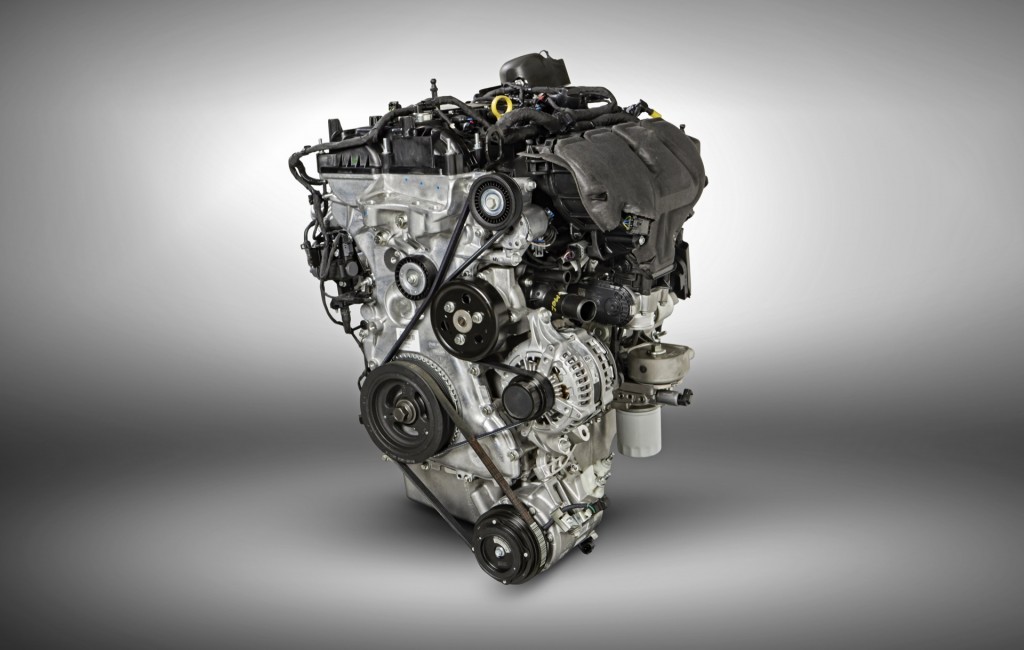Automakers may gradually be putting more emphasis on plug-in electric cars and conventional hybrids, but they are far from done with plain old internal combustion.
Over the past few years, automakers have applied more technology to a wider array of cars in order to boost their efficiency to meet stricter fuel-economy standards.
The most popular manifestation of this is downsized turbocharged engines, which aim to produce similar power to larger naturally-aspirated engines with the better fuel economy of their lower displacement.
DON'T MISS: VW suggests engine downsizing is done; emissions rules are the reason
While these engines may improve gas mileage in EPA laboratory testing, however, they don't always provide the same improvement in real-world driving, notes a recent report in the Chicago Tribune.
Turbochargers increase power by using a turbine—spun by the pressure of exhaust gases exiting the combustion chamber—to force more air into the engine.
They were previously reserved primarily for performance cars, but over the past decade have become a handy solution for automakers looking to cut displacement in the name of fuel efficiency, without sacrificing power.

2017 BMW 3-Series
In 2016, 23 percent of new vehicles sold in the U.S. were turbocharged, compared to 5 percent in 2008 and 2009, according to J.D. Power.
Last year, 57 percent of premium cars and 49 percent of premium SUVs sold had turbocharged engines, along with 12 percent of non-luxury cars, and 14 percent of non-luxury SUVs, the company said.
Nearly 70 percent of Ford F-150 full-size pickup trucks are sold with one of two turbocharged EcoBoost V-6 engines, rather than the traditional naturally-aspirated V-6 or V-8.
ALSO SEE: Tougher testing for emissions may mean bigger engines, but why? (Oct 2016)
But consumers have complained for several years now that they do not achieve the billed fuel economy with these engines, Davide Amodeo, senior manager for J.D. Power, told the Tribune.
This is likely because smaller engines have to work harder than bigger engines to generate comparable power, Amodeo said.
Turbochargers need to "spool up" in order to generate significant boost on demand, requiring higher revs to provide the power demanded by he heavier throttle foot drivers must use to get the same performance as the traditional engine.

2017 Ford F-150
A common refrain regarding Ford's ubiquitous EcoBoost engines has been, "you can have Eco, or you can have Boost, but you can't have both at the same time."
Consumer Reports has also found that turbocharged engines can't always live up to their EPA ratings in real-world driving.
CHECK OUT: When the 'eco' in EcoBoost is so low that gas-guzzler taxes apply
In some cases, those engines are actually worse than the naturally-aspirated alternative, Jake Fisher, the magazine's automotive-testing director, told the Tribune.
Drivers may also not be accustomed to the way turbocharged engines apply their power, Fisher noted.

2016 Ford Explorer - 2.3-liter EcoBoost four-cylinder engine
"Turbo lag," the sensation of waiting for turbocharged to build up boost, is still apparent in some modern engines, although it is now much less prevalent than in the past.
Nonetheless, automakers are likely to continue relying on downsized turbocharged engines to maximize fuel efficiency.
While hybrid and electric powertrains have grown in popularity, many automakers are still unwilling to use them en masse, citing costs and anticipated consumer disinterest.
Any eruption of underlying low-level consumer dissatisfaction with the real-world performance into larger-scale complaints will likely only occur if currently low gasoline prices rise sharply at some point in the future.
Until then, cheap gas largely camouflages that gap—and may continue to do so for some time yet.
_______________________________________________












